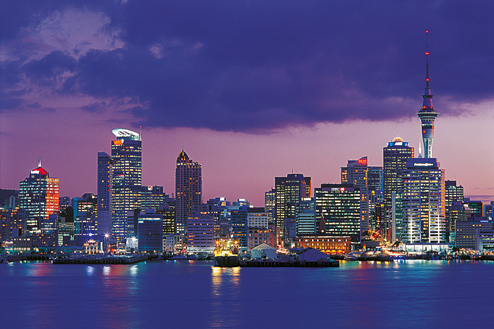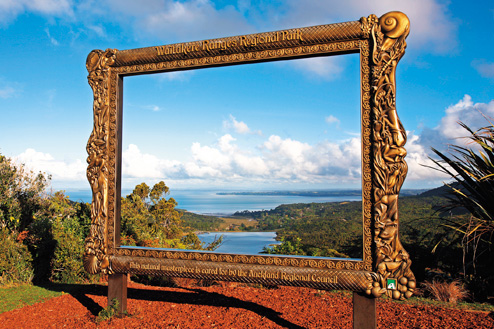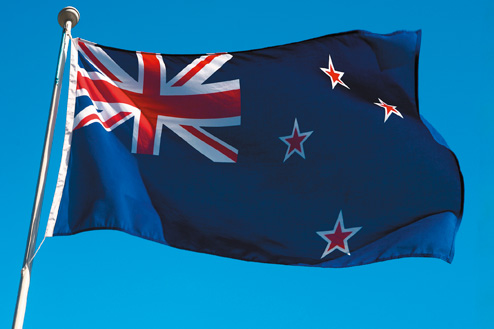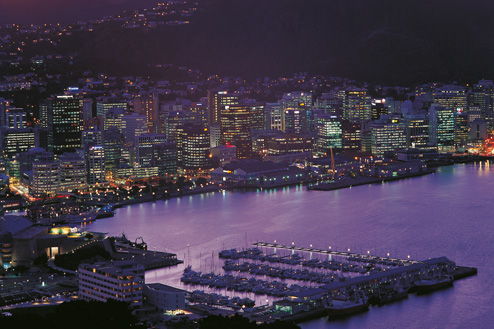Establishing a New Society
Through the later decades of the 19th century and the first years of the 20th, New Zealand rapidly established itself as an ideal and egalitarian society – for the new settlers at least. Treasurer Julius Vogel set into motion a programme of public works, unifying NZ’s series of provinces with improved roads and communication. Kiwis’ much vaunted love of sheep began early, with wool the main export from these early years. It was joined in 1882 by meat exports, as the first shipment of refrigerated lamb was sent to Britain, establishing a reliable export market that was the mainstay of the economy for many decades. But momentous as these changes undoubtedly were, the best was yet to come.
From its unsettled beginnings, New Zealand might have seemed an unlikely place to lead radical social change, but lead it did. In 1890, the Liberal Pact (a left-wing political party made up of a Labour and Liberal alliance), led by John Ballance, began a series of sweeping reforms. Under Minister of Labour William Pember Reeves, workers’ conditions and pay were radically improved, a trend that continued under new party leader Richard Seddon, who introduced graduated income tax, full female suffrage (NZ was the first country in the world to give women the vote) in 1893, and established an old-age pension in 1898.
Meanwhile, the Maori began to be re-establish themselves within society, with members serving in the New Zealand government. Their numbers steadily began to rise as resistance to European diseases grew.
By the time New Zealand was called upon to fight alongside the British in the first world war, it was a Dominion rather than a self-governing colony and locally born Pakeha outstripped the immigrant population. Nevertheless, 100,000 soldiers, including a significant number of Maori servicemen, signed up to fight in the trenches, 17,000 of whom failed to make it home. The worst loss of life was in Gallipoli, which is commemorated as Anzac Day right across New Zealand and Australia.
Throughout the 1920s, NZ continued to grow, although the fallout of the Great Depression in the USA caused export income to drop and national debt to rocket, bringing Aotearoa’s liberal social policies up short. Pensions and healthcare budgets were slashed, while unemployment soared, sparking a wave of poverty and deprivation the country hadn’t seen before or since. Hopes that a new decade would turn things around were dashed when an earthquake hit the Hawke’s Bay region on the morning of 3 February 1931, killing hundreds and destroying the town of Napier, a physical destruction to match the decimated NZ psyche. However, just as the people of Napier used the earthquake as a chance to rebuild and reinvent itself from scratch, so did the Labour Party. Its ascension to power in 1935 ushered in a new national mood. The birth of the world’s first welfare state promised renewed prosperity to all, including, for the first real time, the Maori, who were recognised in welfare, farming and communal land ownership reforms.
From its unsettled beginnings, New Zealand might have seemed an unlikely place to lead radical social change, but lead it did. In 1890, the Liberal Pact (a left-wing political party made up of a Labour and Liberal alliance), led by John Ballance, began a series of sweeping reforms. Under Minister of Labour William Pember Reeves, workers’ conditions and pay were radically improved, a trend that continued under new party leader Richard Seddon, who introduced graduated income tax, full female suffrage (NZ was the first country in the world to give women the vote) in 1893, and established an old-age pension in 1898.
Meanwhile, the Maori began to be re-establish themselves within society, with members serving in the New Zealand government. Their numbers steadily began to rise as resistance to European diseases grew.
By the time New Zealand was called upon to fight alongside the British in the first world war, it was a Dominion rather than a self-governing colony and locally born Pakeha outstripped the immigrant population. Nevertheless, 100,000 soldiers, including a significant number of Maori servicemen, signed up to fight in the trenches, 17,000 of whom failed to make it home. The worst loss of life was in Gallipoli, which is commemorated as Anzac Day right across New Zealand and Australia.
Throughout the 1920s, NZ continued to grow, although the fallout of the Great Depression in the USA caused export income to drop and national debt to rocket, bringing Aotearoa’s liberal social policies up short. Pensions and healthcare budgets were slashed, while unemployment soared, sparking a wave of poverty and deprivation the country hadn’t seen before or since. Hopes that a new decade would turn things around were dashed when an earthquake hit the Hawke’s Bay region on the morning of 3 February 1931, killing hundreds and destroying the town of Napier, a physical destruction to match the decimated NZ psyche. However, just as the people of Napier used the earthquake as a chance to rebuild and reinvent itself from scratch, so did the Labour Party. Its ascension to power in 1935 ushered in a new national mood. The birth of the world’s first welfare state promised renewed prosperity to all, including, for the first real time, the Maori, who were recognised in welfare, farming and communal land ownership reforms.













